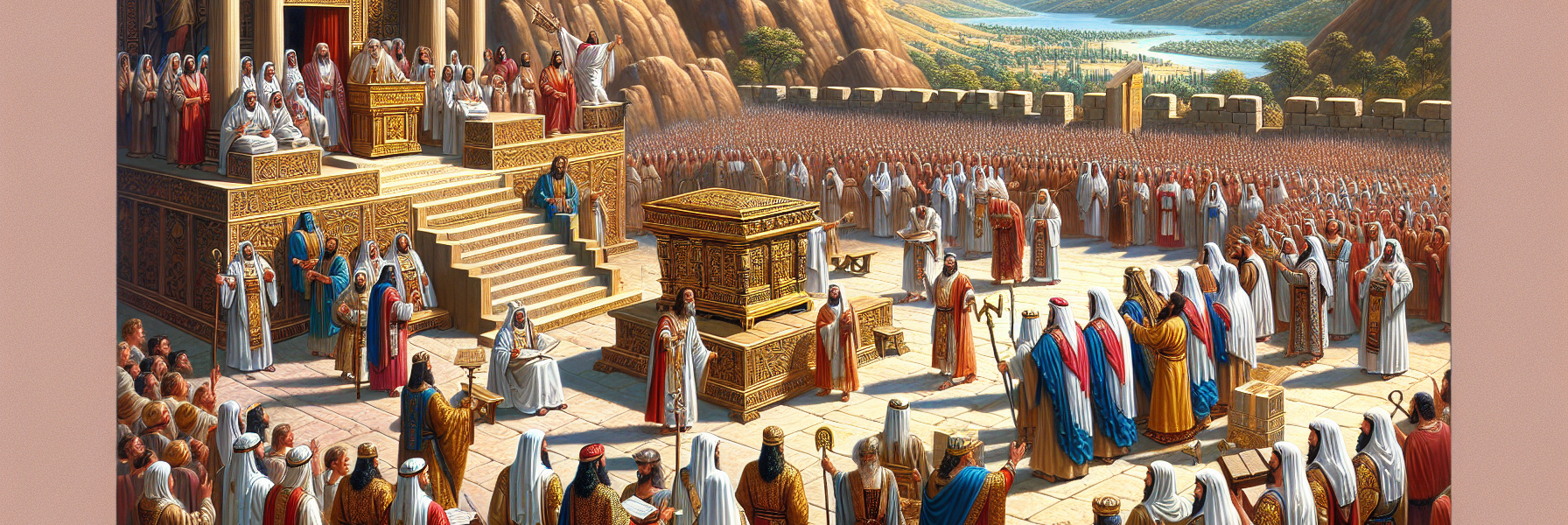**The Division of Priests: A Sacred Duty**
In the days when King David ruled over Israel, the land flourished under his wise and godly leadership. The Ark of the Covenant had been brought to Jerusalem with great rejoicing, and the worship of the Lord was established in the heart of the nation. Yet, David knew that for true order to be maintained in the house of God, the priests and Levites must serve in a manner worthy of their holy calling.
The sons of Aaron, Nadab and Abihu, had long ago perished before the Lord for offering unauthorized fire (Leviticus 10:1-2), leaving behind Eleazar and Ithamar to carry on the priestly line. Now, generations later, the descendants of these two men had multiplied greatly, and David saw the need to organize their service before the Lord.
### **The Casting of Lots**
Gathering the leaders of the priestly families, David stood before them in the courts of the Tabernacle, the scent of incense lingering in the air. Beside him stood Zadok, a descendant of Eleazar, and Ahimelech, a descendant of Ithamar—both men of great reverence and wisdom. The king spoke with authority, yet with humility, for he knew this matter was not his own design but the Lord’s.
“The service of the house of God must be orderly,” David declared. “The Lord has given us the privilege of drawing near to Him, and we must not treat it lightly. Therefore, let us divide the sons of Aaron into their duties by the casting of lots, for the decision is not by man, but by God Himself.”
The priests bowed in agreement, knowing that the lot was a sacred means of discerning God’s will (Proverbs 16:33). The names of the heads of the priestly families were written on scrolls, and with solemn prayer, the lots were cast.
### **The Twenty-Four Courses**
One by one, the order was revealed. The Lord, in His perfect wisdom, appointed twenty-four divisions of priests, each serving in rotation. Sixteen courses were chosen from the descendants of Eleazar, and eight from the descendants of Ithamar, reflecting the greater number of Eleazar’s line. The first lot fell to Jehoiarib, a man of steadfast faith. The second to Jedaiah, the third to Harim, and so on until the twenty-fourth division, Maaziah, was appointed.
Each division was given its time to serve in the Tabernacle, and later in the Temple that Solomon would build. They would offer the morning and evening sacrifices, burn incense before the Lord, bless the people, and keep the sacred flame alive upon the altar. When their appointed week came, they would journey to Jerusalem, leaving their homes and fields in the care of their families, for no duty was greater than serving before the presence of the Almighty.
### **A Legacy of Worship**
The divisions were recorded meticulously, for this was no mere administrative task—it was a divine ordinance. The names of the priests were inscribed in the chronicles of Israel, a testament to their sacred calling.
As the priests returned to their towns, they carried with them the weight of their duty and the joy of their privilege. They knew that though they served in turns, the worship of the Lord never ceased. Day and night, the fire on the altar burned, and the prayers of Israel rose like incense before the throne of heaven.
And so, the divisions stood firm for generations, a reminder that God is a God of order, not of chaos. Even in the years of exile and restoration, the faithful remembered the courses of the priests, for they were a shadow of the eternal priesthood of Christ, the great High Priest who intercedes forever on behalf of His people (Hebrews 7:23-28).
Thus, the wisdom of David, guided by the Spirit of God, ensured that the worship of the Lord would continue in holiness and reverence, as long as the sun rose and set over Israel.




